School Lecturers
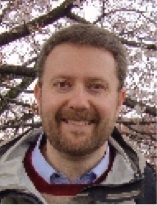 Prof. Pietro Asinari, Politecnico di Torino, Italy.
Prof. Pietro Asinari, Politecnico di Torino, Italy.
Pietro Asinari obtained his B.S. and M.S. (cum laude) in Mechanical Engineering in 2001 and his Ph.D. in Energetics in 2005 at the Politecnico di Torino. He is Associate Professor of Applied Physics and director
of the Multi-Scale Modelling Laboratory (SMaLL). He won the ENI Award, granted for research and development in the fields of energy and the environment. He has published over 60 papers on molecular dynamics, mesoscopic
simulations, nanofluids, heat transfer and renewable energy. He was Research Associate of the Graduate School of Engineering of Kyoto University (Japan) and visiting scientist at Virginia Tech (VA, USA), Old Dominion
University (VA, USA) and Huazhong University of Science and Technology (China). He serves as member of the scientific committee of the International Conference for Mesoscopic Methods in Engineering and Science (ICMMES)
and as a member of the Editorial Board of the international journal Computation.
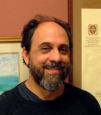 Prof. Dionisio Bernal, Northeastern University, USA.
Prof. Dionisio Bernal, Northeastern University, USA.
Dionisio Bernal obtained his PhD in 1979 at the University of Tennessee and is a Professor and director of the structures area at Northeastern University (NU) in Boston. He is the recipient of the Moisseiff Award
from the American Society of Civil Engineering (ASCE) for his work on instability of structures subjected to strong earthquakes and of the Martin W. Essigmann and the Hayes awards for teaching and research excellence
at NU. He has published over 100 papers on structural dynamics, earthquake engineering and damage characterization from measured signals and is co-Author of a McGraw-Hill textbook on Reinforced Concrete Design.
He served as the Chair of the Health Monitoring task group of the Engineering Mechanics division of ASCE from 2001 to 2003.
 Prof. James Brownjohn, University of Exeter, UK.
Prof. James Brownjohn, University of Exeter, UK.
Prof. Brownjohn joined the University of Sheffield in 2005 after periods at University of Bristol (1984-1992), Nanyang Technological University Singapore (1992-2004) and University of Plymouth (2004-2005). His
academic career has revolved around experimental assessment of the performance of a range of civil structures, using full-scale dynamic testing, long-term monitoring and shaking table testing. His present research
and professional interests include wind engineering, earthquake engineering, and structural health monitoring (SHM), finite element model updating, vibration serviceability, system identification and biomechanics.
He has published in all these areas in a number of journals. His experience with ambient vibration testing and operational modal analysis using minimal portable equipment is a complement to the forced vibration
testing approach traditionally used by the Vibration Engineering Section, which he leads. Prof. Brownjohn is a Fellow of the International Society for Structural Health Monitoring of Intelligent Infrastructure (ISHMII),
and a member of the ASCE Committee on Structural Identification of Constructed Systems and is a founding director of Full Scale Dynamics Ltd, a University spin-out company.
.jpg) Prof. Douglas S. Galvao, University of Campinas, Brazil.
Prof. Douglas S. Galvao, University of Campinas, Brazil.
Douglas S. Galvao is full Professor at the Applied Physics Department in State University of Campinas in Brazil where he got his PhD degree in 1989. As a post-doc he spent two years working on organic materials
in USA (Bellcore and Princeton University). His main current interests are in nanotechnology and the use of artificial intelligence in materials design. He received many distinctions during his career including
the Young Brazilian Scientist and the Zeferino Vaz Awards. He is the author of more than 200 refereed papers and currently Associate Editor of the Computational Materials Science.
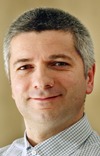 Prof. Branko Glisic, Princeton University, USA.
Prof. Branko Glisic, Princeton University, USA.
Branko Glišić received his degrees in Civil Engineering and Theoretical Mathematics at University of Belgrade, Serbia, and Ph.D. at the EPFL, Switzerland. After eight-year long experience at SMARTEC SA,
Switzerland, where he was involved in numerous SHM projects, he has been employed as an Assistant Professor at Department of Civil and Environmental Engineering of Princeton University. His main areas of interest
are SHM methods, advanced sensors based on fiber-optics, large-area electronics and conductive polymers, SHM data management, and smart structures. He introduced SHM in classrooms as regular undergraduate and graduate
courses at Princeton University. Prof. Glišić was awarded 2013 SHM Person of the Year Award by the editors and associate editors of “Structural Health Monitoring: An International Journal” and
along with his collaborators he won the First Place at the 7th Princeton Innovation Forum with his research on sensors based on large-area electronics. He is author and co-author of more than hundred published papers,
short courses on SHM, and the book “Fibre Optic Methods for Structural Health Monitoring”. He is a member the Council of ISHMII, editor-in-chief of the ISHMII’s newsletter “Monitor”,
voting member of ACI committee on SHM, and member of several other professional associations (IABMAS, ASCE, etc.).
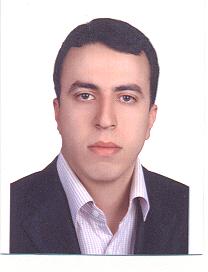
Prof. Emad Jomehzadeh, Kerman Graduate University of Advanced Technology (KGUT), Iran.
Emad Jomehzadeh is an Assistant Professor of Mechanical Engineering at Graduate University of Advanced Technology,
Kerman, Iran. He received his Ph.D in Mechanical Engineering. He carried out several projects in structural mechanics, vibration analysis and nano mechanics and some of his papers were pioneer in the field of FGM.
His H-index is 10 in SciVerse Scopus database. He ranked 8th among all researchers of mechanical engineering in Iran, 2011.
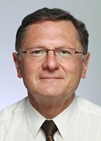 Prof. Wieslaw M. Ostachowicz, Polish Academy of Sciences (IFFM), Poland.
Prof. Wieslaw M. Ostachowicz, Polish Academy of Sciences (IFFM), Poland.
Dr. Wieslaw Ostachowicz is the Full Professor of Mechanical Engineering at the Institute of Fluid Flow Machinery, Polish Academy of Sciences. He has led dynamics research throughout the last twenty years as the
chairman of the Department: Mechanics of Intelligent Structures. His research spans several important sub–disciplines: smart structures and materials, structural health monitoring, extended non–destructive
testing and damage assessment analysis. Prof. Ostachowicz personally specializes in various structural health monitoring techniques, vibration control, structural dynamics, composite structures, multifunctional
materials, smart materials and structures, damage assessment of structures, working in these fields both theoretically and experimentally. In the past seven years his research has focused on the development and
use of the Spectral Finite Element Method for damage assessment as well as smart materials applications. Prof. Ostachowicz has published 5 monographs, 6 book chapters, 4 proceedings volumes, 142 articles distributed
in the highest–quality international journals, and over 120 technical reports in the fields of structural dynamics and SHM. Dr. Ostachowicz has assumed leadership roles in the international smart structures
and structural health monitoring community having served as the Associate Editor of the following journals: Structural Health Monitoring; Smart Materials and Structures; Intelligent Material Systems and Structures.
More recently Dr Ostachowicz has served as the Chairman of the SHM Person of the Year Awards Committee.
 Prof. Ton Peijs, Queen Mary University of London, UK.
Prof. Ton Peijs, Queen Mary University of London, UK.
Ton Peijs' research area is in Polymer Nanotechnology. He received his PhD from Eindhoven University of Technology (The Netherlands) and joined Queen Mary in 1999. He is a visiting professor at Eindhoven
University of Technology (The Netherlands) and Institute of Chemical Engineering and High Temperature Chemical Processes (ICE-HT), Patras University (Greece). His research interests cover the whole technology platform
from processing and characterisation to the performance evaluation and applications of polymers and their composites. In recent years, his work has mainly focused on the utilization of nanoscale architecture in
polymers and composites, the creation of high-performance fibres for advanced all-polymer composites, intelligent fibres for smart textiles, and the development of novel materials based on renewable resources. TP
is the author or co-author of over 200 papers in scientific journals and conference proceedings. He was the co-organiser and co-chairman of the 10th European Conference on Composite Materials (ECCM-10) and is the
founder of the biannual International Conference Series on Eco-Composites (ECOCOMP). He is a member of the editorial board of seven leading journals in the field of materials, polymers and composites and was the
conference chair for the 2008 Gordon Research Conference (GRC) on Composites. He is the recipient of the 2008 Dutch Polymer Award of Polymer Technology Netherlands (PTN) and the 2010 Swinburne Medal & Prize
of the Institute of Materials, Minerals and Mining (IOM3). TP is a director of Nanoforce Technology Ltd a spin-out company, wholly-owned by QMUL devoted to nanocomposites research for exploitation by industry.
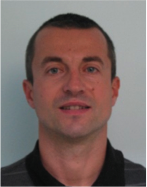 Prof. Nicola M. Pugno, University of Trento, Italy.
Prof. Nicola M. Pugno, University of Trento, Italy.
Nicola M. Pugno holds a Master’s degree in Mechanical Engineering and a Master’s degree in Theoretical Physics, as well as a Ph.D. in Fracture Mechanics (Mathematical Foundations) and he is currently
at the third year of a Ph.D. in Biology (Learning Solid and Structural Mechanics from Spiders). He is a Full Professor of Solid and Structural Mechanics at the University of Trento, Italy and there Founder and Head
of the Laboratory of Bio-Inspired and Graphene Nanomechanics (previous Professor, Founder and Head of the Laboratory of Bio-Inspired Nanomechanics “Giuseppe Maria Pugno”, at the Politecnico di Torino,
Italy). He is also the Scientific Responsible of Graphene Nanocomposites (within the Graphene Flagship) at the Fondazione Bruno Kessler, Trento, Italy and Full Professor of Materials Science at the Queen Mary University
of London, London, UK (Computational Nanomechanics Group). He has published about 220 International Journal (Int. J.) papers on Solid-, Structural-, Fracture-, Bio- and Nano-Mechanics in leading international journals
(including Nature and Nature Materials) mainly on nanotubes and graphene and bio-inspired nanomaterials (e.g. mimicking nacre for strength, spider silk for toughness, gecko foot for smart adhesion, lotus leaf for
self-cleaning, bone for self-healing, etc.). He is a Reviewer for about 100 Int. J. and is in the Editorial Board of about 40 Int. J. and Editor-in-chief of Bio-Inspired Materials and Frontiers in Materials - Mechanics.
NMP has received the 2011 ERC Starting Grant and in 2013 both the two ERC Proof of Concept assigned to Italy by the European Research Council.
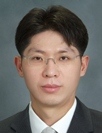 Prof. Hoon Sohn, Korean Advanced Institute of Science and Technology (KAIST), Korea.
Prof. Hoon Sohn received his B.S. (1992) and M.S. (1994) degrees from Seoul National University, Seoul Korea and PhD (1999) from Stanford University, California, USA, all in Civil Engineering. He is now Professor
at KAIST. Over the last fifteen years, his research interest has been in the area of structural health monitoring and smart sensing technologies. He has published over 100 refereed journal articles, over 250 conference
proceedings, and 5 book chapters. In 2012, he was selected as among the 100 most promising individuals in Korea by one of the three major newspapers in Korea. He was also the recipient of SHM Person-of-Year Award
at the 2011 International workshop on SHM and 2008 Young Scientists Award in Korea, which is similar to the Presidential Early Career Award from US National Science Foundation (PECASE Award). He serves as Associate
Editor of the International Journal of Structural Health Monitoring, and as Editorial Board Member of the International Journal of Smart Structures and Systems and International Journal of Structural Control and
Health Monitoring.
Prof. Hoon Sohn, Korean Advanced Institute of Science and Technology (KAIST), Korea.
Prof. Hoon Sohn received his B.S. (1992) and M.S. (1994) degrees from Seoul National University, Seoul Korea and PhD (1999) from Stanford University, California, USA, all in Civil Engineering. He is now Professor
at KAIST. Over the last fifteen years, his research interest has been in the area of structural health monitoring and smart sensing technologies. He has published over 100 refereed journal articles, over 250 conference
proceedings, and 5 book chapters. In 2012, he was selected as among the 100 most promising individuals in Korea by one of the three major newspapers in Korea. He was also the recipient of SHM Person-of-Year Award
at the 2011 International workshop on SHM and 2008 Young Scientists Award in Korea, which is similar to the Presidential Early Career Award from US National Science Foundation (PECASE Award). He serves as Associate
Editor of the International Journal of Structural Health Monitoring, and as Editorial Board Member of the International Journal of Smart Structures and Systems and International Journal of Structural Control and
Health Monitoring.
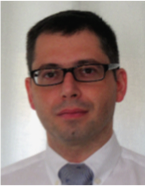 Prof. Daniele Zonta, University of Trento, Italy.
Prof. Daniele Zonta, University of Trento, Italy.
Daniele Zonta achieved his Doctorate in Structural Mechanics at the University of Bologna in 2000, and worked as a Post-Doctorate researcher at the University of California, San Diego, in the period 2000-2001. Since
2001, he is assistant professor at the University of Trento, where he teaching Structural Design and Structural Health Monitoring. His research activity includes: Bridge Management; Reliability Evaluation; Structural
Health Monitoring; Sensor and Information Technology; all as applied to civil infrastructure. Dr. Zonta is an active member of SPIE, SEM, IABMAS, where he serves in the SHM committee; chair of the Memscon Series
Workshops; he regularly organizes special sessions for the main conferences in the field (including the EWSHM/IWSHM series); he serves as a reviewer in most of the journals of the Structural Health Monitoring community.
He was awarded 2014 SHM Person of the Year by the SAGE SHM editorial board. In the past years, Dr. Zonta has been a visiting scholars at the University of California, San Diego, Princeton University and the
University of Michigan. He is author of over one hundred technical publications.
